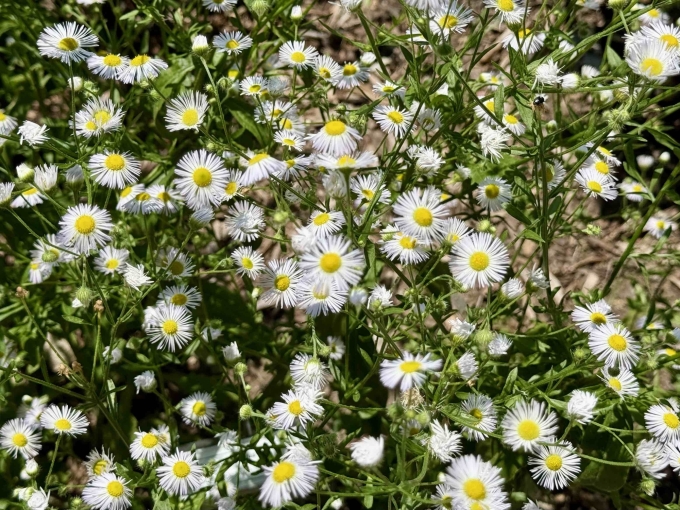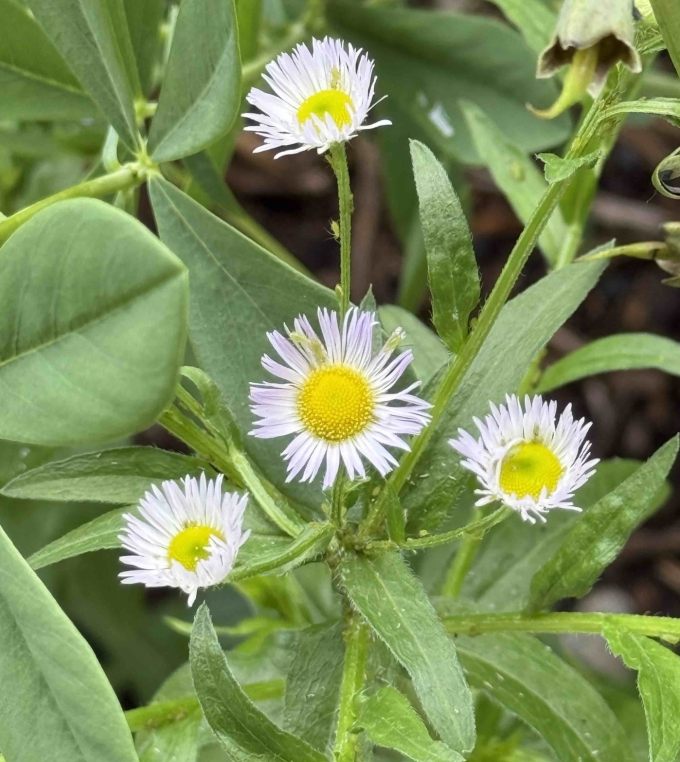Common Name: Annual Fleabane
Family: Asteraceae
Plant Type: Annual or Biennial Wildflower
Native Range: Eastern and Central North America, including Nebraska
Hardiness Zones: Annual; reseeds readily
Height: 1.0 to 3.0 feet
Spread: 0.5 to 1.0 feet
Bloom Time: May to October
Bloom Description: Small white to pale pink ray flowers with yellow centers
Sun Exposure: Full sun to part shade
Water Needs: Medium
Soil Preference: Average, well-drained; tolerant of disturbed soils
Maintenance Level: Low
Suggested Use: Naturalize, meadow plantings, pollinator support
Attracts: Bees, butterflies, beneficial insects
Tolerates: Poor soils, disturbed sites, drought once established
Notable Features: Long bloom time, colonizes quickly, pioneer species
Nebraska Growing Notes:
Annual fleabane is a widespread and adaptable native wildflower that thrives in roadsides, pastures, woodland edges, and disturbed areas across Nebraska. While it is often considered weedy in manicured settings, it provides important ecological value—especially as an early colonizer in restoration or low-input plantings.
The daisy-like flowers appear in large numbers from spring through fall and serve as a nectar source for small pollinators. Plants are self-seeding and readily establish in a variety of soil types, including compacted or gravelly soils. Though named “annual,” fleabane often behaves like a biennial or short-lived perennial depending on conditions.
Landscape Use:
Useful in prairie restoration, naturalized areas, or informal wildflower gardens where colonization and resilience are desired. Its airy structure and long blooming season provide a soft, cheerful presence in meadow-style plantings.
Caution:
May be overly aggressive or weedy in formal gardens. Self-seeds prolifically—deadhead to control spread if desired. Best used in wild or semi-managed settings.
Garden Locations:
4, 5


